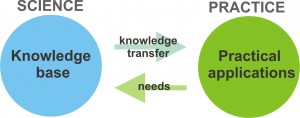Would you prefer to gain knowledge before practicing or practice before gaining knowledge? What if you don’t have the choice?
Nowadays, many managers in different work environments appear to find themselves responsible for increasing number of tasks and before they realize, their initial job description often appears to be no longer valid and very far from the reality!
From personal experience, I consider project management as one of the most interesting elements that happen to creep into the job description of many managers and leaders in different organizations, where sometimes, it eventually shapes a big part of their roles. It is fascinating to see many managers excelling in project management in their organizations and successfully manage various projects delivering superb results, whilst they have received minimal structured project management training or education, if any!
In the dynamic business environment of today, project management is one of the key qualities that organizations look for when recruiting for managerial positions. Recruiters will normally also look for potential to build such capabilities as many managers develop the same by practicing and ultimately become responsible for managing various project. Has the bar been raised by the workforce or is project management becoming a ‘must have’ for managers?
It appears that project management has now become an integral part of managerial roles, however, it is indeed interesting to see how knowledge and theories related to this science are placed compared to application in real life – based on which comes first and the degree of overlap between the two elements. When managers find themselves practicing project management roles by virtue of their job, they utilize the tools of the trades at work without structured studying / training pertaining to the same. Therefore, it is very likely for them to take particular interest in the concepts when they are formally introduced as practical experience will come to aid when taking closer look and probably better place them in terms of picking the most useful tools to put in practice.
Knowledge is important and having access to the various tools of project management is crucial for successful project management, nevertheless, learning by practicing is unmatchable! Having to face the reality and learning from peers and superiors at work help managers to develop project management skills in very exciting way. Such managers are also likely to better appreciate the concepts and tools when they learn more about them as they have seen them in practice and more knowledge will better equip them to further cultivate their careers and deliver better results.
Learning before practicing sounds more academic than practical, and the way I see it, unless knowledge of project management is coupled with concurrent practical application, only modest results can be reaped. Don’t you agree?
